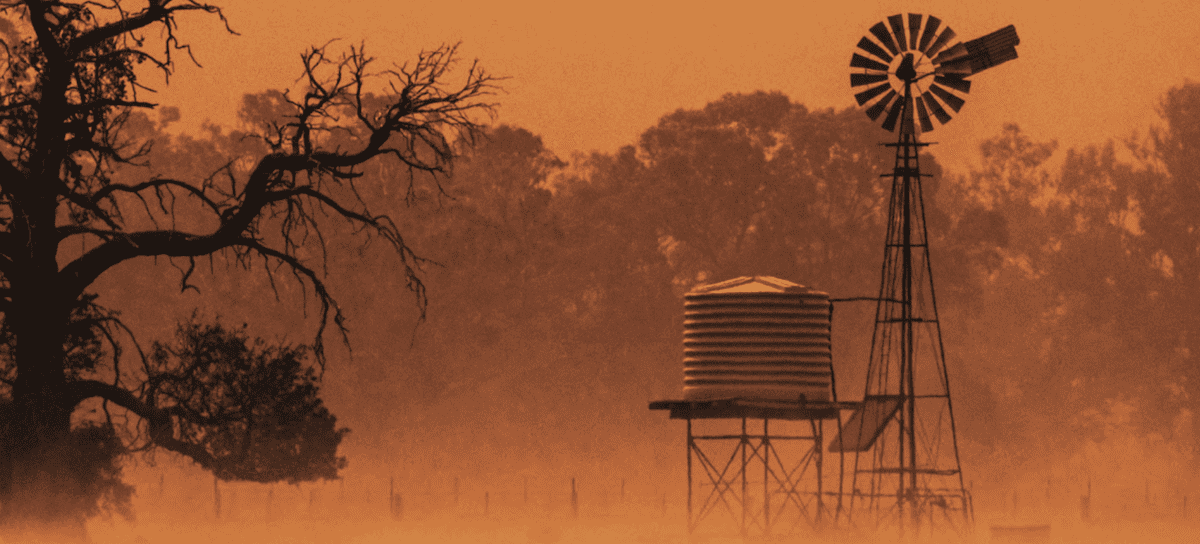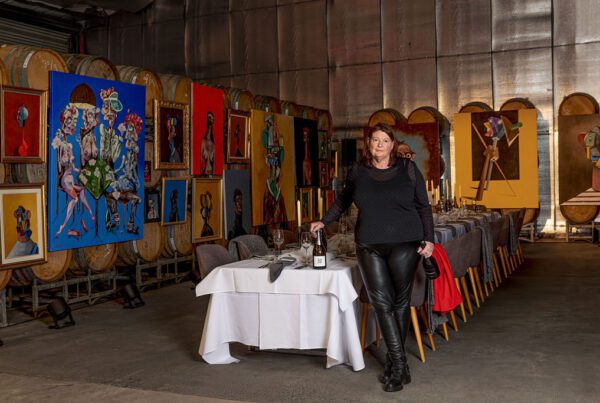
Viticulture consultant Richard Smart replies to an article by Brian Croser published in WBM – Australia’s Wine Business Magazine.
Let it be clearly noted that I am taking the micky out of my esteemed colleague Brian Croser by using this title for my article.
I do not do so out of disrespect for Brian, recognising as I do his many achievements on behalf of the Australian wine sector.
I do so because I am on a mission to warn members of the Australian grape and wine industry about the imminent and confronting dangers of the climate crisis, already being felt by many, and worse yet to come.
I think Brian’s article “Thank you Sam” (published in the May-June issue of WBM – Australia’s Wine Business Magazine) is a distraction to these imminent dangers, and may offer comfort to the majority of producers where no comfort is warranted.
SAM (Southern Annual Mode) is one of some four weather systems affecting Australia’s climate.
Others are El-Nino-Southern Oscillation (ENSO), the Indian Ocean Dipole, the Australian monsoon and the Madden-Julian Oscillation.
SAM is subject to short-term fluctuations, even fortnightly.
These weather systems all have effects in concert with a dominating influence of increasing global warming.
The warming trend is known to be due primarily to use of fossil fuels, via increases in atmospheric carbon dioxide concentration.
Overall, temperatures in Australia are increasing, especially since around 1970, and notably since 2000 (see Figure 1).
This is the real weather issue confronting the Australian (and international) wine industry, given the acknowledged climate sensitivity of grape varieties and wine style.
Combining the trend of increasing temperature with the fact that almost three quarters of Australia’s wine is grown in hot inland irrigated regions reflects Australia’s wine dilemma with temperature.
Brian’s article describes the relative good fortune of his three cool area ‘distinguished’ vineyard sites in the Piccadilly Valley, Fleurieu Peninsula and at Wrattonbully, having cooler than normal vintages in 2020, 2021 and 2022, leading to improved quality.
He asks, “Are we entering another cool era as occurred from 1945 to 1954 and 1995 to 2005?”
I strongly suspect not, at least so far as the fortunes of the great majority of Australian grape and wine producers are concerned.
These producers are located in warm to hot vineyard regions.
Brian and I have long shared a belief in the wine style and quality benefits of cool vineyard regions, but these regions are presently very limited in production in Australia.
Currently there is concern among some members of the wine sector to work towards carbon emission reduction, as is occurring in other industries.
Strategies available for mitigation are indicated in a recent publication (Smart and Cameron 2022).
Sadly, uptake on emission reduction in the wine sector is currently limited although climate scientists warn of need for urgent action to avoid further global temperature increases.
Most producers will be concerned with adaptation, realising that it is easier to change varieties than locations.
The cited publication on “Variety choice for warmer climates” and its literature will be helpful. (Dry and Smart 2022).
A recent paper (Kurtural and Gambetta 2021) describes concern for quality of wine production in Bordeaux and Napa Valley because of recent increases in temperature, especially since around 2000.
As yet unpublished temperature analyses for Sunraysia and Barossa by myself and colleagues reveal similar disturbing trends in Australia, becoming too hot for winegrapes?
I want to reinforce the problems faced now by the sector, and the idea that they can and should be doing something about reducing carbon emissions.
Let us not forget that wineries and breweries contribute directly to increasing atmospheric CO2 concentration, a practice which they should address. Other polluters are in line to be taxed for CO2 emissions – maybe wineries in the future?
Recently Brian wrote in Jancis Robinson’s website about the Indian Ocean Dipole and wine production in Australia. I think it is time we involved opinions from a climate expert on this situation.
Distinguished climate scientist and IPCC major contributor Professor Joelle Gergis in her recent book ‘Humanities Moment’ (2022) makes the extraordinary yet reasoned statement: “(my) most important insight was that the people alive today will determine humanity’s future”.
This is one hell of a statement, implying urgency and the need for action. Not only does she imply humankind’s survivability, and of our societies, but of many other life forms on earth, and their communities.
Read her book to learn why she makes such a profound judgement. This will lead to an understanding of why climate scientists are so concerned that we make progress urgently to reduce atmospheric CO2.
If readers do not understand this urgency, I suggest reading the book.
References
1. Dry, P. and Smart, R. (2022). Varietal choice for a warmer future. Wine Vitic. J. 37 (4):54-60.
2. Gergis, Joelle.(2022).Humanity’sMoment. A Climate Scientist’s Case for Hope. Black Inc, Collingwood, Vic. 325 pp.
3. Smart, R. and Cameron, W. (2022). Avoiding climate change. Is the Australian wine industry ‘all in this together’? Wine Vitic. J. 37(1):38-42.
• This article first appeared in WBM – Australia’s Wine Business Magazine. To subscribe click here.













Recent Comments